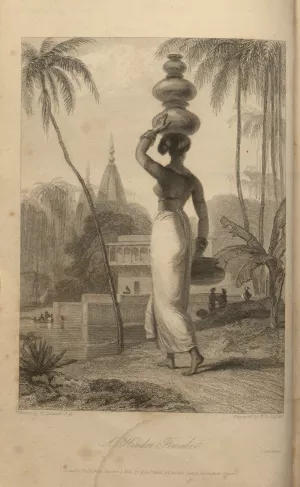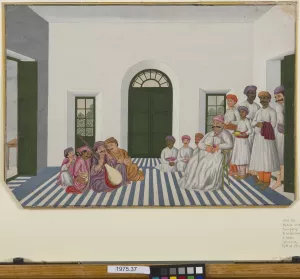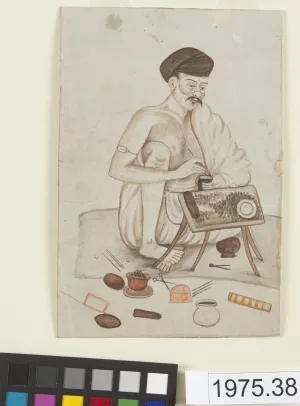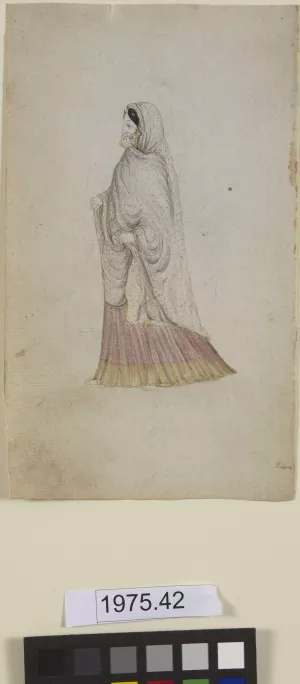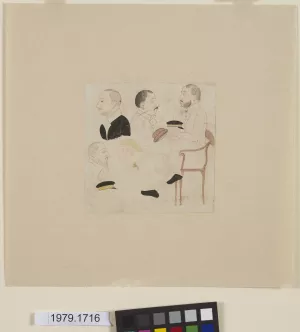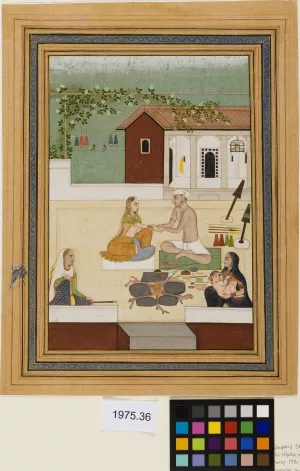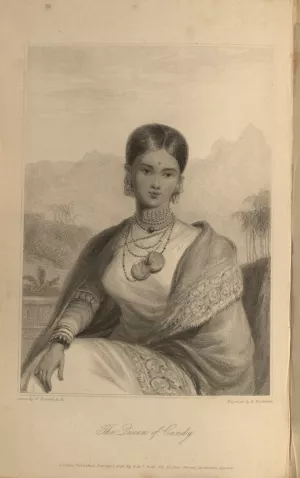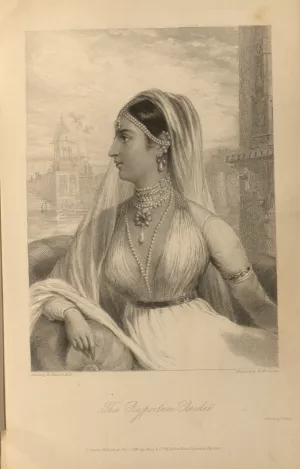During the Romantic period, India was one of Britain’s most prized colonies. From the establishment of the East India Trading Company in 1600 to the mid-nineteenth century, these two cultures were inextricably entwined as a result of the exchange of goods such as textiles, spices and crafts; this initially commercial exchange eventually facilitated and occurred alongside the exchange of ideas and people. This gallery is made up of images of India drawn by William Daniell and bound in his book, The Oriental Annual (London, 1834-40), and also includes miniature paintings done by Indian artists working in the Company style. The Company style paintings have been characterized as hybrids in which Indian artists employed techniques such as shading, linear perspective, and a subdued color palate to transform their more “traditional” art—which tended to be abstract, mythical, and brightly colored—into manifestations of the “picturesque”. Mildred Archer describes this movement from traditional Indian art to the Company style as a response to the increasing demand by the British in India and abroad for art that was more reminiscent of a Romantic aesthetic (see Early Views of India: The Picturesque Journeys of Thomas and William Daniell, 1786-1794: The Complete Aquatints; New York: Thames and Hudson, 1980). This gallery complicates the assumptions of hybridity typically associated with the Company style by examining the interactions between British and Indians as exemplified in the comparison of Company style paintings with the work of Thomas and William Daniell in India. The resulting selection of images not only exposes racial typing and the classification of colonized bodies, but ultimately suggests that agency became most available to those artists working in the Company style. Finally, by elucidating instances of transculturation that occurred between the metropole and the colony, this gallery reveals the ways in which exposure to the Company style potentially changed and developed the British Romantic concept of the picturesque.

